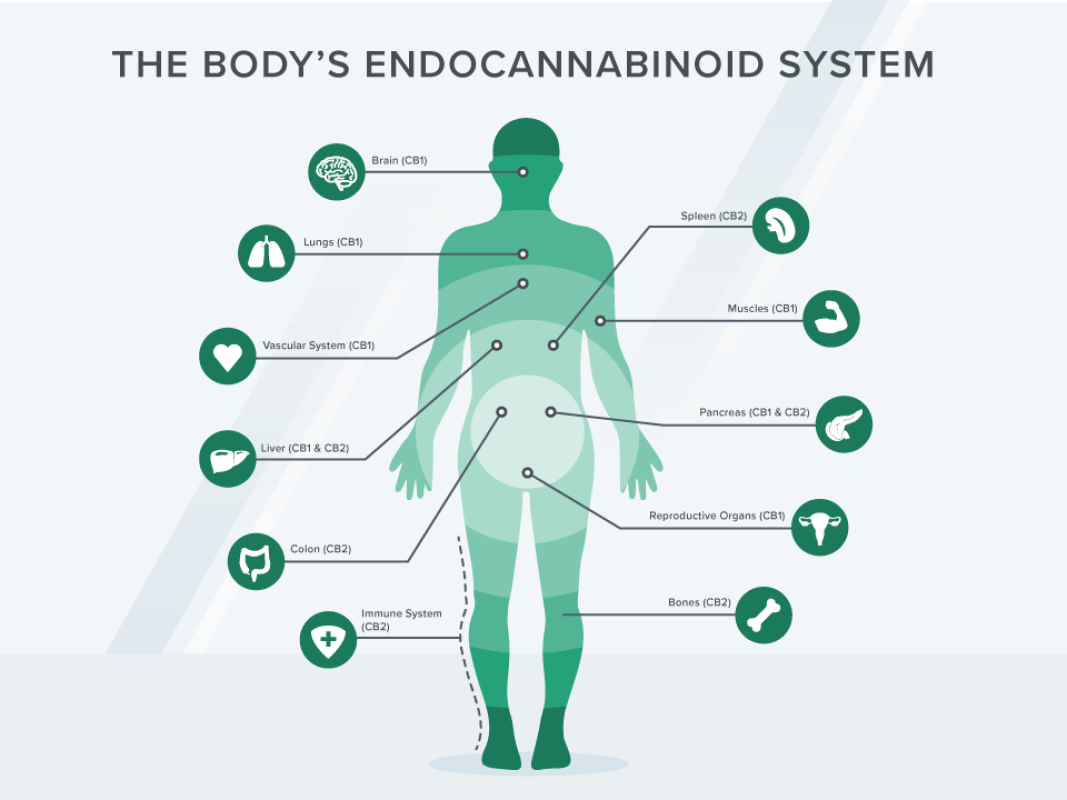-
×
 100mg Shroom Microdose Deadhead Chemist (24)
1 × $65.00
100mg Shroom Microdose Deadhead Chemist (24)
1 × $65.00
Cannabis, CBD, Magic Mushrooms, Psilocybin
What Is the Endocannabinoid System?
The human body is home to a vast network of systems that work together to maintain balance and health. One of the most fascinating and lesser-known among them is the endocannabinoid system (ECS). While it was only discovered in the early 1990s, the ECS plays a crucial role in regulating many physiological processes — from mood and sleep to pain and immune function.
Despite its recent discovery, the ECS is present in all humans and many animals, and understanding how it works can help us appreciate the role it plays in maintaining optimal health — and why compounds like CBD (cannabidiol) are gaining so much attention in the wellness world.
The Discovery of the Endocannabinoid System
The ECS was first identified by researchers studying the effects of tetrahydrocannabinol (THC), the main psychoactive compound in cannabis. They were curious how THC could interact so precisely with the brain and body. What they found was groundbreaking: the human body has a built-in system that not only responds to cannabinoids from plants but also produces its own cannabinoids.
This system was named the “endocannabinoid system” — “endo” meaning “within the body” and “cannabinoid” referring to the compounds that affect this system.
Core Components of the ECS
The endocannabinoid system is made up of three key components:
1. Endocannabinoids
These are natural chemicals produced by the body that are structurally similar to cannabinoids found in the cannabis plant. The two most well-known endocannabinoids are:
- Anandamide (AEA) – often called the “bliss molecule,” associated with mood and happiness.
- 2-Arachidonoylglycerol (2-AG) – involved in regulating immune function and inflammation.
Unlike hormones, endocannabinoids are produced on-demand, meaning they’re made only when needed to help maintain internal balance, or homeostasis.
2. Cannabinoid Receptors
These receptors are located throughout the body and act like locks that can be activated by endocannabinoids (or external cannabinoids like THC and CBD).
- CB1 receptors are mainly found in the brain and central nervous system. They help regulate mood, memory, motor control, and appetite.
- CB2 receptors are mostly located in the immune system and peripheral organs. They are involved in inflammation and immune responses.
3. Enzymes
After endocannabinoids have carried out their function, enzymes break them down. The main enzymes involved are:
- FAAH (Fatty Acid Amide Hydrolase) – breaks down anandamide
- MAGL (Monoacylglycerol Lipase) – breaks down 2-AG
These enzymes ensure that endocannabinoids are used only when necessary and do not linger longer than needed.
What Does the ECS Do?
The primary role of the ECS is to maintain homeostasis — the body’s internal state of balance. It’s involved in regulating a wide range of functions, including:
- Mood and emotional balance
- Sleep and wake cycles
- Appetite and digestion
- Immune function
- Inflammation and pain sensation
- Memory and learning
- Reproductive health
- Temperature regulation
When something disrupts homeostasis — such as stress, injury, or illness — the ECS steps in to help the body return to its optimal state.
The ECS and CBD: How Do They Interact?
Unlike THC, which binds directly to CB1 receptors and causes a psychoactive effect, CBD interacts with the ECS more indirectly.
CBD does not bind strongly to CB1 or CB2 receptors. Instead, it influences the ECS by:
- Inhibiting FAAH, the enzyme that breaks down anandamide. This allows anandamide to remain active longer, potentially enhancing mood and reducing stress.
- Modulating non-ECS receptors (like serotonin and TRPV1 receptors) that affect pain and inflammation.
- Supporting overall ECS tone, helping the system function more efficiently over time.
This may explain why people use CBD to help with issues like anxiety, sleep, pain, and inflammation — even though more research is needed to fully understand its therapeutic potential.
Can the ECS Become Imbalanced?
Yes. Just like other systems in the body, the ECS can become dysregulated due to chronic stress, poor diet, lack of sleep, or environmental toxins. When the ECS is not functioning properly, it may contribute to health issues such as:
- Anxiety or depression
- Chronic inflammation
- Sleep disorders
- Autoimmune diseases
- Digestive problems
Supporting the ECS through healthy lifestyle choices, such as stress management, regular physical activity, and a nutrient-rich diet, can help maintain balance.
Final Thoughts
The endocannabinoid system is a complex and vital network that keeps our bodies in balance. Though it was discovered only a few decades ago, the ECS plays a central role in regulating countless bodily functions and maintaining our health and well-being.
As scientific research continues to explore the ECS, we are gaining deeper insights into how cannabinoids — both those produced naturally by the body and those derived from plants like cannabis — may support human health.

